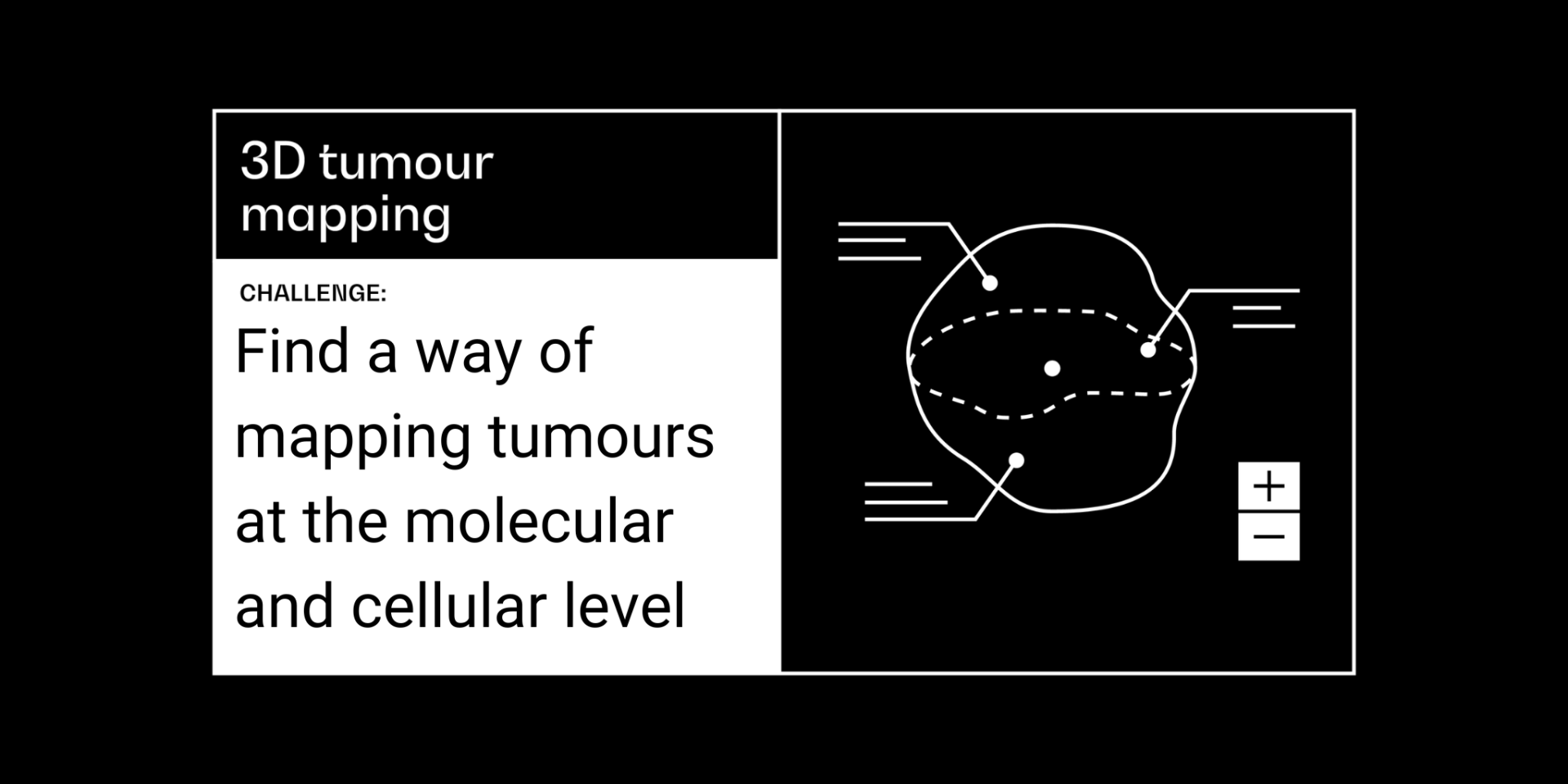
3D tumour mapping
Cancer Grand Challenges is a series of £20m ($25m) awards that give international teams of researchers the freedom to think differently, act creatively and explore truly innovative science to take on fundamental questions in cancer.
This was a challenge in an earlier round, we are not currently accepting applications for this challenge.
Context
A tumour is a complex and organised tissue whose behaviour reflects the interaction between heterogeneous tumour cells, immune cells, tumour cell clones arising from stem/progenitor cells, and the many other components of the ‘tumour microenvironment’.
There is every reason to believe that hidden within these interactions is new information and indicators about tumour behaviour, prognosis, and treatment response, as well as new therapeutic targets.
Technologies such as in situ and single-cell sequencing and high-resolution imaging can now reveal the 3D cellular and molecular details of the tumour as a real organ, whether in primary tumours or metastases.
What’s missing is a detailed map at a single cell level of the mutational and structural heterogeneity in DNA, patterns of conventional and nonconventional RNA transcription and protein expression, and the biochemical signature of all the cells and cell types in a tumour, which simultaneously captures the complexity of the intra-tumour architecture.
If achieved, this could transform the way we define and classify tumours, and would provide the basis for a dynamic view of the tumour over time and in response to treatment.
Barriers and opportunities
Although we know that different populations of cells are present within a tumour, the most common method of analysis, in which the tumour is pulled apart and cells are studied separately, gives us little or no information about why cells are there, how they got there, and what they are doing.
This Grand Challenge seeks to overcome this barrier by taking a holistic view of tumours as an integrated, organised population of cells, rather than a reductionist approach studying very small parts of the problem.
This Grand Challenge will require extensive interdisciplinary collaboration, and the scale of ambition of any applications must be beyond what would be fundable by standard mechanisms.
We would anticipate the requirement for collaboration between a wide range of biomedical fields as well as the physical sciences and engineering communities to tackle the mapping and modelling elements of the challenge.
Although it is likely to be beyond the scope of this Grand Challenge, an ultimate ambition is to model a tumour in four dimensions, tracking its evolution over time. Proposals suggesting new approaches to 3D mapping that might one day be adaptable to 4D studies are welcome.
Given this Challenge’s highly ambitious goal, we will consider outstanding applications designed to resolve important barriers on the road to success, such as the role of the immune system and/or the tumour microbiota, as well as proposals that span the entirety of the Challenge.
Vision and Impact
This Cancer Grand Challenge seeks to overcome this barrier by taking a holistic view of tumours as an integrated, organised population of cells, rather than a reductionist approach studying very small parts of the problem.
Plain language summary: Why 3D tumour mapping?
Tumours aren’t just composed of cancer cells – they contain a complete life support system, called the tumour microenvironment, without which the cancer cells wouldn’t survive. If we could pull the plug on the tumour’s life support, it would kill it – but first, we need to identify the crucial components.
Cancer cells live in complex communities. Just like houses in a city, each cell in a tumour is different from its neighbour, and relies on infrastructure to support its existence.
There are different neighbourhoods–some worse than others. Where we have roads, tumours contain blood vessels that deliver nutrients, and act as highways for different cell types to move around. And when a tumour spreads, the cancer cells themselves use these blood ‘roads’ to migrate.
What we really need is a Google Earth-like view of a tumour. If we could make a 3D map, we’d find new targets for treatment and, eventually, could use this view to track what’s going on in real time, such as in response to treatment.